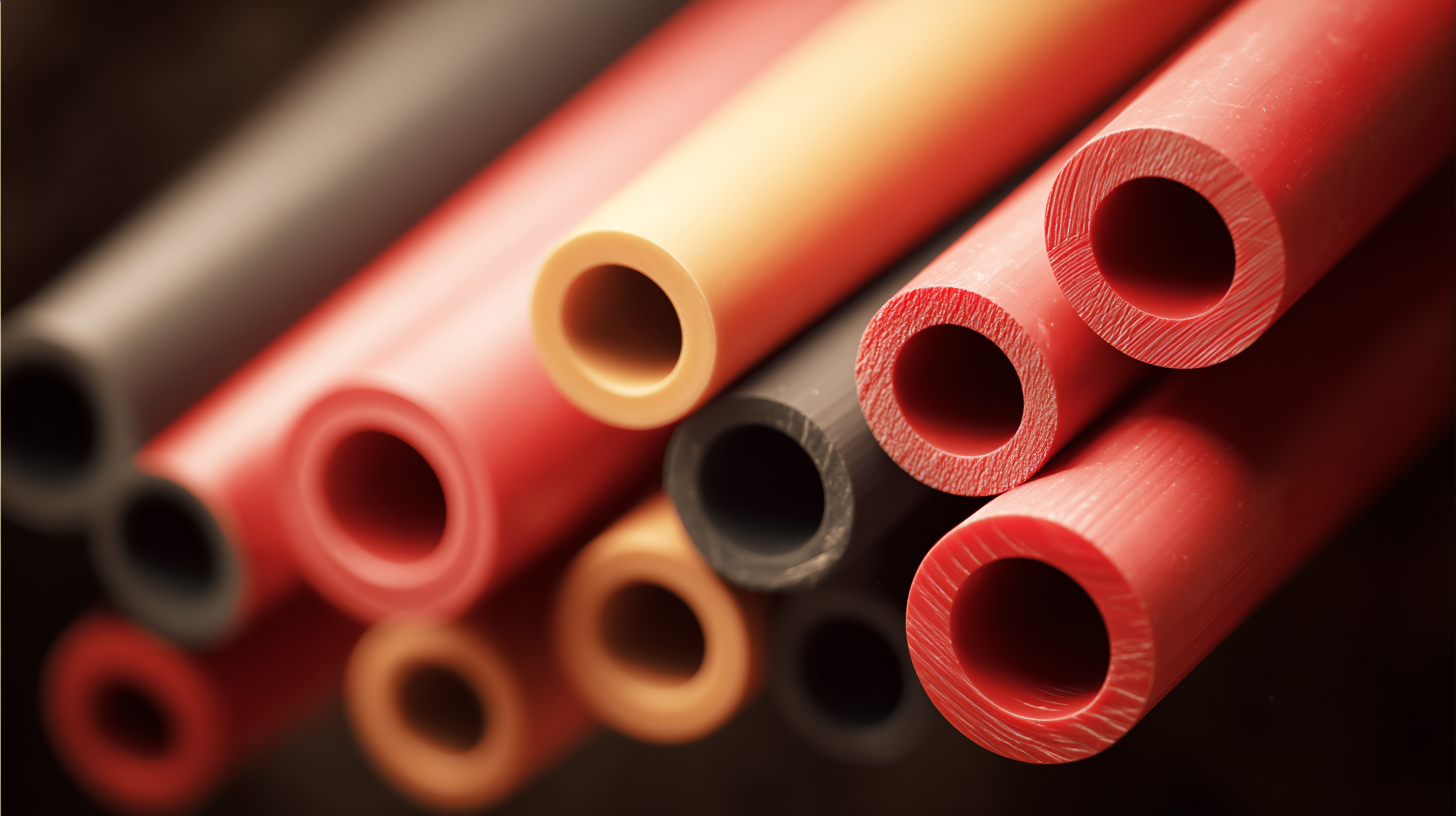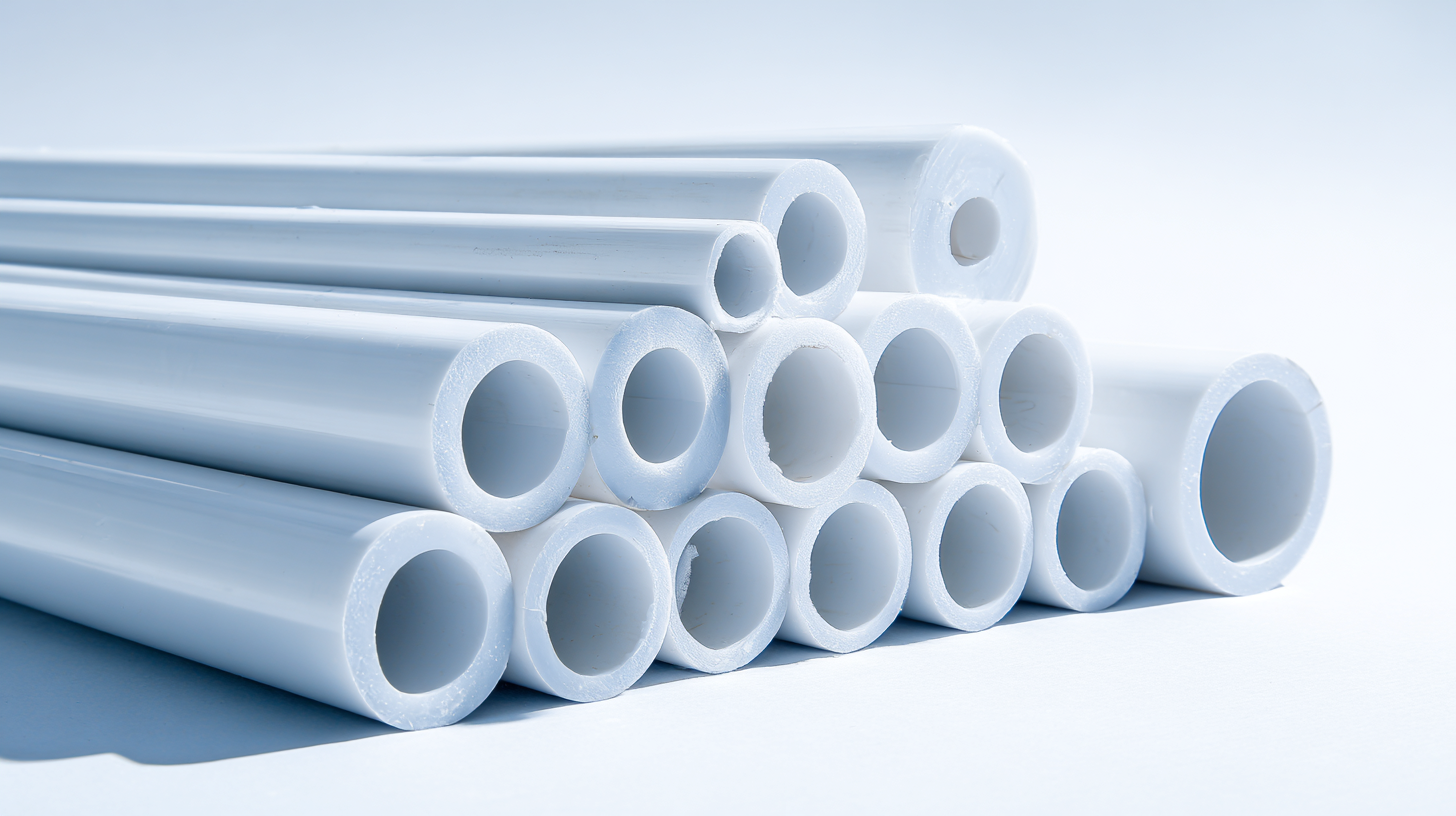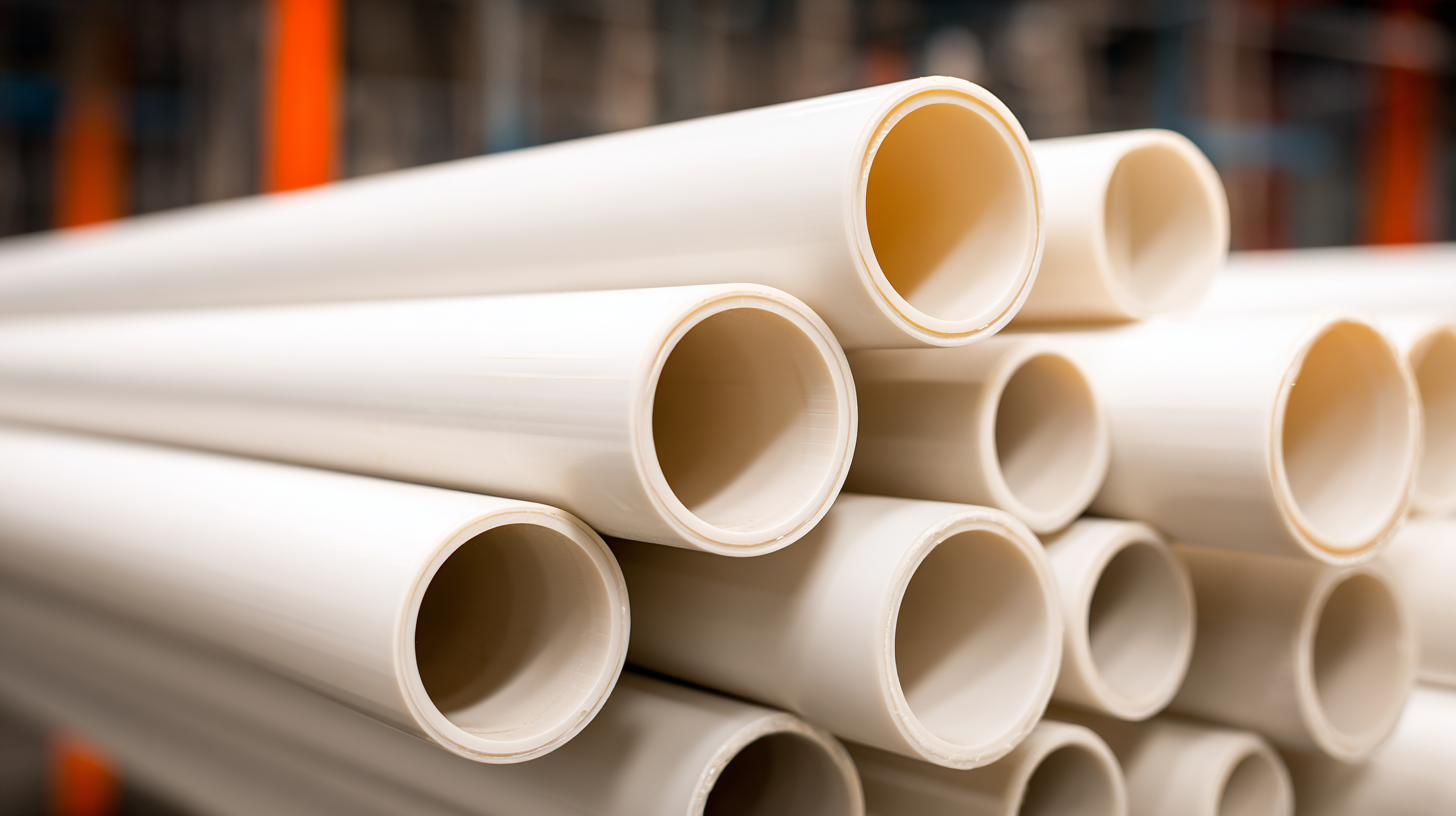Unlocking the Benefits of PVDF Tubing: Why It’s the Future of Industrial Solutions
The emergence of PVDF tubing is revolutionizing various industrial sectors, thanks to its superior performance and versatility. With the global market for fluoropolymer products expected to reach approximately $7 billion by 2025, driven by increasing demand for high-purity and chemical-resistant materials, PVDF tubing is becoming a preferred choice for many applications. Various reports indicate that PVDF tubing boasts exceptional resistance to a wide range of chemicals, high temperatures, and UV radiation, making it ideal for environments that require robust and reliable solutions.
 In the pharmaceutical and semiconductor industries, where purity and reliability are paramount, the utilization of PVDF tubing can enhance process efficiency and product quality significantly. As industries continue to innovate and seek sustainable materials, PVDF tubing stands at the forefront, embodying the future of industrial solutions.
In the pharmaceutical and semiconductor industries, where purity and reliability are paramount, the utilization of PVDF tubing can enhance process efficiency and product quality significantly. As industries continue to innovate and seek sustainable materials, PVDF tubing stands at the forefront, embodying the future of industrial solutions.
Key Properties of PVDF Tubing That Drive Industrial Adoption
PVDF (polyvinylidene fluoride) tubing is becoming increasingly popular in industrial applications due to its exceptional properties that cater to a diverse range of needs. Its high chemical resistance, mechanical strength, and thermal stability make it an ideal choice for industries such as pharmaceuticals, wastewater treatment, and chemical processing. According to market insights, the global fluoropolymer market, which includes PVDF, is expected to grow from $2.1 billion in 2024 to $3.4 billion by 2034, indicating a compound annual growth rate (CAGR) of 4.9%.
One of the key properties of PVDF tubing is its ability to withstand extreme temperatures, making it suitable for various applications including transportation and agricultural machinery. Moreover, its lightweight nature contributes to improved efficiency in operations. With the increasing demand for silver in the industrial sector, projected to rise from 37,918 tons in 2024 to 40,287 tons by 2027, manufacturers may turn toward innovative materials like PVDF tubing to enhance their product offerings and meet the evolving market needs.
Tip: When selecting materials for industrial applications, consider not only the resistance to chemicals and temperature but also the long-term sustainability of the materials used. Investing in high-performance options like PVDF tubing can lead to greater operational efficiency and lower maintenance costs over time.

Advantages of Using PVDF Tubing Over Traditional Materials
PVDF (Polyvinylidene Fluoride) tubing is rapidly gaining traction as a preferred choice for industrial applications, thanks to its remarkable properties that significantly outshine traditional materials. According to a report by Grand View Research, the global PVDF market size is expected to reach USD 5.63 billion by 2025, growing at a CAGR of 5.2%. This surge is primarily driven by PVDF’s excellent chemical resistance, high thermal stability, and low permeability, which make it ideal for demanding environments.

In contrast to conventional materials such as PVC and rubber, PVDF tubing offers superior resistance to solvents, acids, and bases, making it a safer and more durable option for the transport of aggressive chemicals. Its operational temperature range extends from -40°C to 150°C, allowing it to withstand harsh conditions without compromising performance. Furthermore, PVDF is FDA-compliant, ensuring that it meets stringent safety standards, making it a top choice in industries such as pharmaceuticals and food processing where contamination is a critical concern. Transitioning to PVDF not only enhances system reliability but can also lead to cost savings in maintenance and replacement over time.
Applications of PVDF Tubing in Various Industries
PVDF (Polyvinylidene fluoride) tubing has emerged as a versatile solution across a range of industries due to its exceptional chemical resistance and durability. In the pharmaceutical industry, PVDF tubing is invaluable for transferring aggressive chemicals and high-purity liquids, ensuring that contamination is minimized during production processes. Its ability to withstand sterilization methods also makes it a preferred choice in applications requiring stringent hygiene standards.
In the aerospace and automotive sectors, PVDF tubing is utilized for its lightweight properties and high-performance characteristics. It is commonly employed in fuel lines and hydraulic systems where resistance to harsh environmental conditions is crucial. The tubing's resilience against UV radiation and temperature variations further enhances its applicability in outdoor and extreme-weather environments. Overall, PVDF tubing's unique properties facilitate its adoption in diverse applications, marking it as an essential component in modern industrial solutions.
Environmental and Safety Benefits of PVDF Tubing
PVDF tubing, or polyvinylidene fluoride tubing, is gaining significant recognition in industrial applications due to its exceptional environmental and safety benefits. One of the most remarkable characteristics of PVDF is its chemical resistance; it exhibits outstanding durability against a wide range of corrosive substances, which minimizes the risk of leaks and contamination in various processes. According to a report by the Global Chemical Resistance Market, PVDF’s resistance to aggressive chemicals can reduce operational failures by up to 30%, leading to enhanced safety and reduced environmental impact.
Moreover, PVDF is a sustainable option, as it is 100% recyclable and can be reused in various applications without compromising its integrity. This aligns with the industry's movement towards greener solutions, as highlighted in the 2022 Environmental Impact Assessment published by EcoSurveys. The report notes that switching to PVDF tubing can lower carbon emissions associated with production and waste management by approximately 25%. As industries commit to greater sustainability, PVDF tubing emerges as a forward-thinking alternative that not only supports safety protocols but also addresses environmental concerns effectively.
Benefits of PVDF Tubing in Industrial Applications
Future Trends in PVDF Technology for Industrial Solutions
The evolution of PVDF (polyvinylidene fluoride) technology is poised to reshape industrial applications significantly. As industries increasingly demand robust, durable, and high-performance materials, PVDF tubing stands out due to its remarkable chemical resistance and temperature stability. With its wide applications in sectors such as oil and gas, electrical, and automotive, the PVDF market is projected to witness substantial growth. A recent industry report indicates that the PVDF market is expected to reach significant milestones by 2033, driven by its integration into renewable energy sectors and high-performance components like lithium-ion batteries.
Future trends in PVDF technology will emphasize enhanced material properties to meet the growing demands of renewable energy applications. Reports suggest that the PVDF binders market alone, valued at $150 million in 2022, is forecasted to grow to $230 million by 2030, showcasing a compound annual growth rate of 7.5%. This growth reflects the increasing adoption of PVDF in critical applications such as solar panels and electric vehicle manufacturing. As companies strive for sustainable solutions, the robust nature of PVDF will be integral in supporting high-quality developments in the renewable energy landscape, solidifying its role as a cornerstone for future industrial solutions.
Unlocking the Benefits of PVDF Tubing: Why It’s the Future of Industrial Solutions
| Property | PVDF Tubing | Traditional Materials |
|---|---|---|
| Chemical Resistance | Excellent | Moderate |
| Temperature Range | -40°C to 150°C | -20°C to 120°C |
| Flexibility | High | Low |
| UV Resistance | Good | Poor |
| Durability | Long-lasting | Average |
| Applications | Pharmaceutical, Chemical Processing | General Purpose, Water Transport |
| Cost | Moderate | Low |

